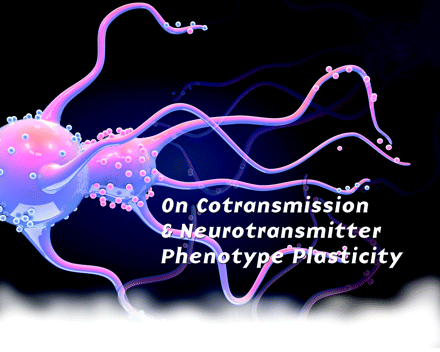On Cotransmission & Neurotransmitter Phenotype Plasticity
- 1Department of Pharmacology, CNS Research Group, Faculty of Medicine, Université de Montreal, C.P. 6128, Succursale Centre-Ville, Montreal, Quebec, Canada H3C 3J7
- 2Department of Physiology, Neurosciences, and Biophysics, Centro de Investigación y Estudios Avanzados, Apartado Postal 14-740, Mexico D.F. 07000
Abstract
Most neurons in the nervous system appear to contain and release more than one chemical acting as a neurotransmitter or neuromodulator. Cotransmission can therefore be considered the rule rather than the exception. Indeed, cotransmission of a classical neurotransmitter and a peptide is a ubiquitous phenomenon, but several neuron types can also contain more than one classical neurotransmitter [glutamate, γ-amino butyric acid (GABA), acetylcholine, dopamine, etc.]. Although the expression of peptide cotransmitters is known to be highly regulated in response to various physiological, chemical and pathological signals, new data now suggest that a similar situation prevails in neurons that co-release two classical transmitters. In this review we will consider a number of recently described examples of cotransmission implicating more than one classical neurotransmitter. We will also consider new data showing that during development and later in adulthood, as well as in the context of disease, the neurotransmitter phenotype of neurons can be highly plastic as revealed by changes in the expression of neurotransmitter synthesis enzymes and vesicular neurotransmitter transporters.

- © American Society for Pharmacology and Experimental Theraputics 2007



